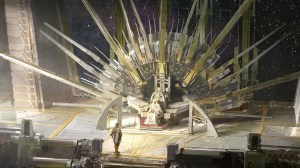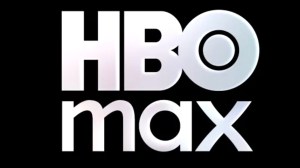Ronald D. Moore’s reimagined Battlestar Galactica, which aired from 2004 to 2009, remains a landmark achievement in science fiction television. It transcended its remake status to become a critically acclaimed drama, lauded for its gritty realism, complex characters, and daring exploration of political, religious, and philosophical themes. The series followed the last remnants of humanity, led by Commander William Adama (Edward James Olmos) and President Laura Roslin (Mary McDonnell), as they fled the genocidal Cylon attack, searching for the mythical thirteenth colony: Earth. With its blend of space opera, military drama, and theological allegory, Battlestar Galactica captivated audiences with its moral ambiguity and the desperate struggles of its characters, both human and Cylon.
Videos by ComicBook.com
While the series finale, “Daybreak,” provided emotional closure for many of its central figures and seemingly resolved the human-Cylon conflict, the show’s intricate mythology and willingness to embrace mystery left many questions lingering in the vacuum of space. These are ambiguities and unresolved threads that continue to fuel intense fan discussions, theories, and debates years after the final credits rolled, highlighting the complex tapestry the show wove.
1) What Exactly Were “Head Six” and “Head Baltar”?
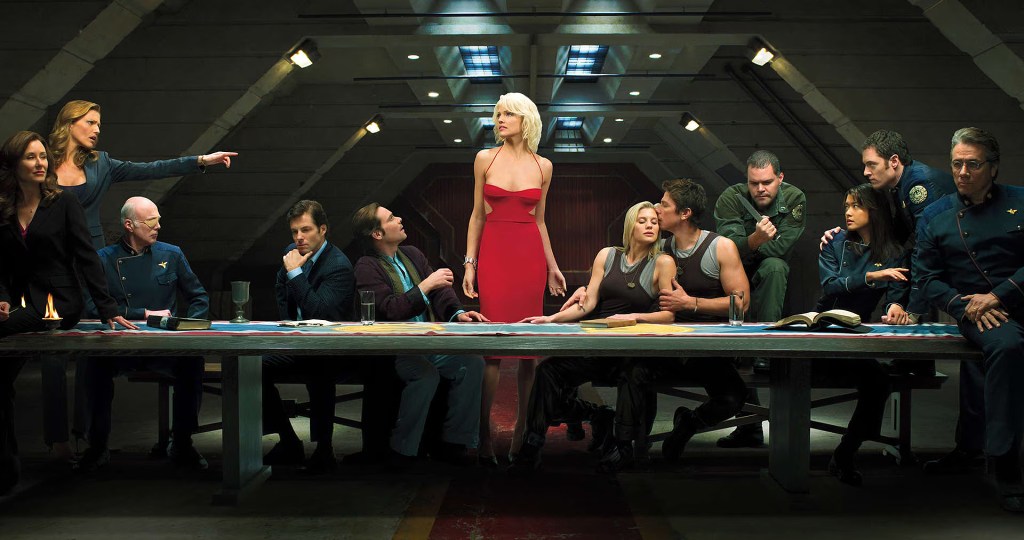
Throughout the series, Dr. Gaius Baltar (James Callis) was often tormented by an internal projection of Number Six (Tricia Helfer), visible only to him and referred to by fans as “Head Six.” Similarly, the Cylon model Caprica Six experienced visions of a “Head Baltar” after her resurrection on a Cylon ship. These entities presented themselves as divine messengers, possessing knowledge beyond their hosts’ direct experience and guiding them toward pivotal actions that shaped the destiny of both humans and Cylons. The finale appeared to confirm their angelic nature, showing them observing humanity’s new beginning on our Earth from afar, discussing God’s plan.
Despite this apparent confirmation, the precise nature, origins, and the full extent of the powers and motivations of Head Six and Head Baltar remain subjects of considerable fan debate, as Battlestar Galactica deliberately avoided providing concrete explanations for their existence or abilities. This ambiguity leaves fans to speculate whether they were truly supernatural beings in a traditional sense, manifestations of a more advanced form of consciousness, or perhaps even a misunderstood alien or technological influence operating on a different plane of reality.
2) Starbuck’s Resurrection and Final Destiny

Kara “Starbuck” Thrace (Katee Sackhoff), Galactica’s ace Viper pilot, embarked on one of the most enigmatic character journeys in the series. After her apparent death in a suicidal Viper explosion during Season 3, she miraculously returned months later, piloting a pristine Viper and claiming to have visited Earth and found the path to humanity’s final destination. Her reappearance was met with a mixture of awe, disbelief, and suspicion, with characters and viewers alike questioning whether she was a Cylon, a ghost, or something else entirely. The series finale saw her fulfill a crucial role by using musical notes from a childhood song to input the coordinates to our Earth, after which she simply vanished without a trace, her purpose seemingly complete.
Battlestar Galactica never explicitly defined the mechanics or precise nature of Starbuck’s return from death or her ultimate fate. The narrative strongly implied a supernatural intervention, positioning her as a “harbinger of death” who ultimately led humanity to a new life. However, whether she was resurrected by God, transformed into an angelic or spiritual entity, or if her existence was part of a more complex cyclical pattern tied to the show’s recurring themes of death and rebirth, remains undefined. Her sudden disappearance after fulfilling her destiny left her ultimate state of being a profound mystery, prompting ongoing fan theories about what she truly became.
3) The Original Earth and the 13th Tribe
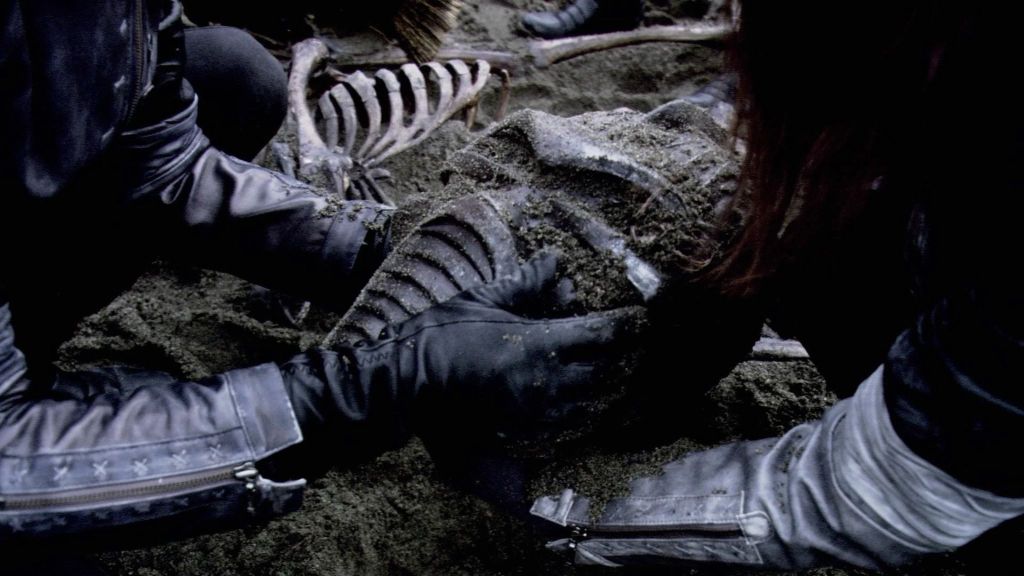
While these revelations provided a broad outline of the 13th Tribe’s history and fate, many specific details about this ancient Cylon civilization remain unexplored. The show offered limited insight into their culture, societal structure, scientific advancements, or the precise grievances that led to their servants’ rebellion and their ultimate self-destruction. The nuances of their long journey from Kobol, their development into humanoid Cylons capable of biological reproduction (as the Final Five were), and the full timeline of their rise and fall constitute a significant gap in Battlestar Galactica‘s extensive lore.
4) What Was God’s Ultimate Plan?
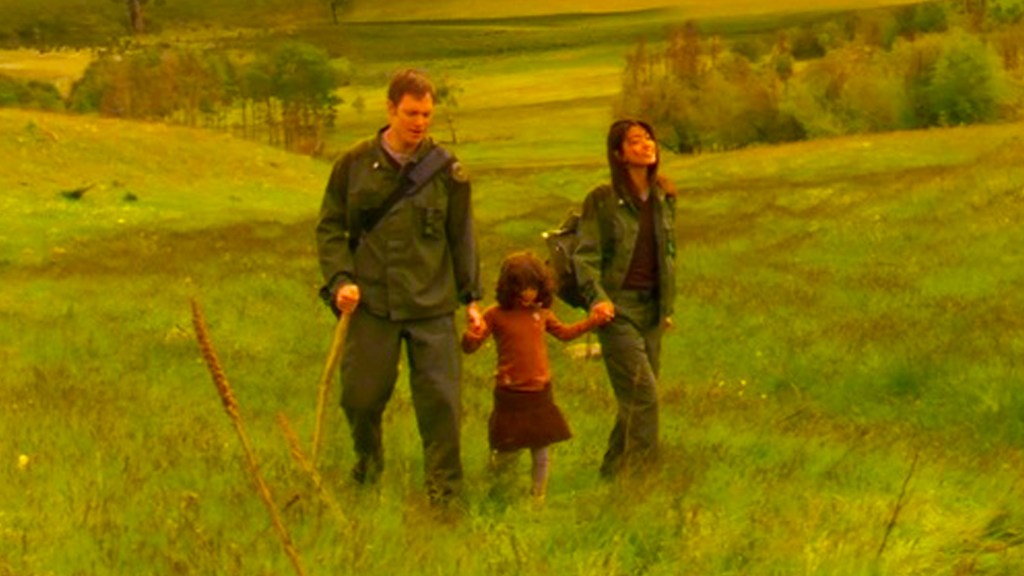
Battlestar Galactica persistently suggests intervention by a higher power, frequently referred to by characters simply as “God.” This divine influence manifested through visions, prophecies, unexplained survivals, and apparent manipulations of events, seemingly guiding both human and Cylon actions towards a predetermined outcome. The narrative implied this entity, or entities, operated beyond the comprehension of the characters, working to break a destructive cycle of creation, rebellion, and annihilation that had repeated throughout history. The series concluded with the intimation that this divine plan had, at least for this iteration of the cycle, reached a form of successful resolution with the settlement of the new Earth.
However, the complete scope, specific objectives, and ultimate motivations behind this divine plan were never fully elucidated by Battlestar Galactica. The show left the precise nature of this “God” deeply ambiguous — whether it represented a singular, omnipotent deity, a collective of advanced non-corporeal beings, a fundamental universal force guiding events, or something else entirely. The lack of a definitive explanation for the “why” behind the divine machinations, beyond the general desire to end the cycle of violence, means fans continue to debate the theological and philosophical underpinnings of the entire saga.
5) The Opera House Prophecy

The visions of an Opera House on Kobol, experienced recurrently by President Roslin, Athena (Grace Park), and Caprica Six, served as an enigmatic prophetic motif. These shared visions typically depicted Hera, the unique human-Cylon hybrid child, being carried through the Opera House towards figures resembling Head Six and Head Baltar, implying a pivotal confrontation or convergence. The setting of these visions often merged with the Galactica’s CIC during moments of intense crisis, suggesting a link between the prophecy and the fleet’s fate. The prophecy underscored Hera’s critical importance to the future of both races and hinted at a predetermined path.
While certain elements of the Opera House prophecy appeared to come to fruition, particularly Hera’s central role and the final climactic events unfolding in a manner reminiscent of the visions, the full symbolic weight of the prophecy remains open to considerable fan interpretation. The series did not explicitly decode every aspect of the visions, leaving ambiguity as to whether they were a literal roadmap of unavoidable events, a metaphorical representation of character choices and their ultimate consequences, or a complex interplay of both fixed destiny and free will. As a result, the precise mechanics of how this prophecy functioned within the show’s universe and its complete implications continue to be a source of discussion.
6) Who Was Daniel, the Erased Cylon?

A significant revelation in Season 4 of Battlestar Galactica concerned the original lineup of the “Significant Seven” humanoid Cylon models (Models One through Seven). It was disclosed that Number Seven, named Daniel, was effectively erased from Cylon history before his line could be fully activated and mass-produced. John Cavil (Dean Stockwell), the Number One model, driven by jealousy over Daniel’s perceived artistic sensitivities and the favor shown to him by their “mother,” Ellen Tigh (Kate Vernon), corrupted Daniel’s genetic formula and destroyed the entire line. This act of “fratricide” predated the Cylon attack on the Colonies and was a closely guarded secret among the Cylons.
Battlestar Galactica provided only limited information about Daniel, leaving the full impact of his absence largely to speculation. The narrative suggested he was designed to be more emotionally attuned than other models. Yet, we still don’t know the specific contributions his model might have made to Cylon society, or how his presence could have altered the trajectory of Cylon development, their internal politics, the Cylon civil war, or their relationship with humanity.
7) What Became of the Rebel Cylons and Their Centurions?
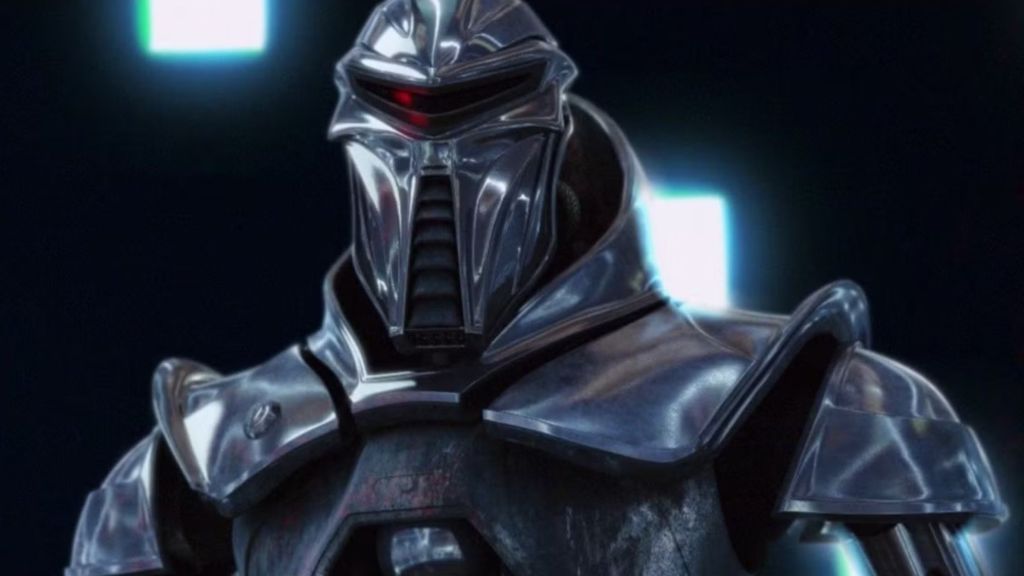
The Cylon Civil War saw a significant faction of humanoid Cylons, including various Number Sixes, Number Eights (Grace Park), and Number Twos (Callum Keith Rennie), rebel against John Cavil’s authoritarian leadership. A key point of contention was Cavil’s decision to lobotomize the Cylon Raiders and Centurions, stripping them of their sentience. These rebel Cylons ultimately allied themselves with the human fleet, playing a crucial role in the final battles and the journey to new Earth. Upon reaching humanity’s new home, the rebel Cylons, along with their liberated and fully sentient Centurions, were granted their freedom and their Basestar. They chose to embark on their own path, jumping their ship away to an unknown destination rather than integrating with the humans and remaining Cylons.
Battlestar Galactica offered no further information on the fate of this departing group of rebel Cylons and their advanced Centurion allies. Their journey into the vastness of space, their attempts to build their own independent society, the potential evolution of the sentient Centurions, and any challenges or discoveries they might have encountered are entirely unresolved. This deliberate loose end leaves fans to imagine what became of this unique faction, representing a distinct future path for Cylonkind that diverged from both humanity and the Cylons who chose to live among them.
What Battlestar Galactica questions do you still find yourself debating? Share your biggest unsolved mysteries in the comments below!







